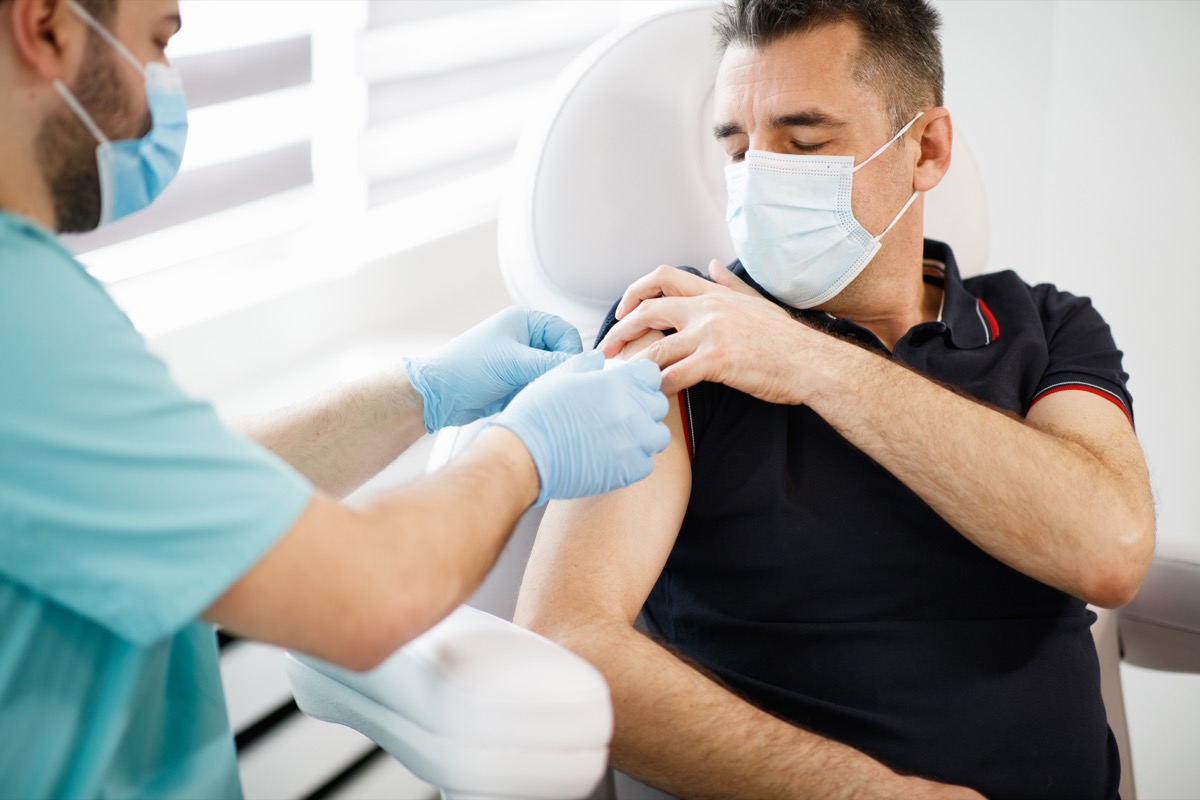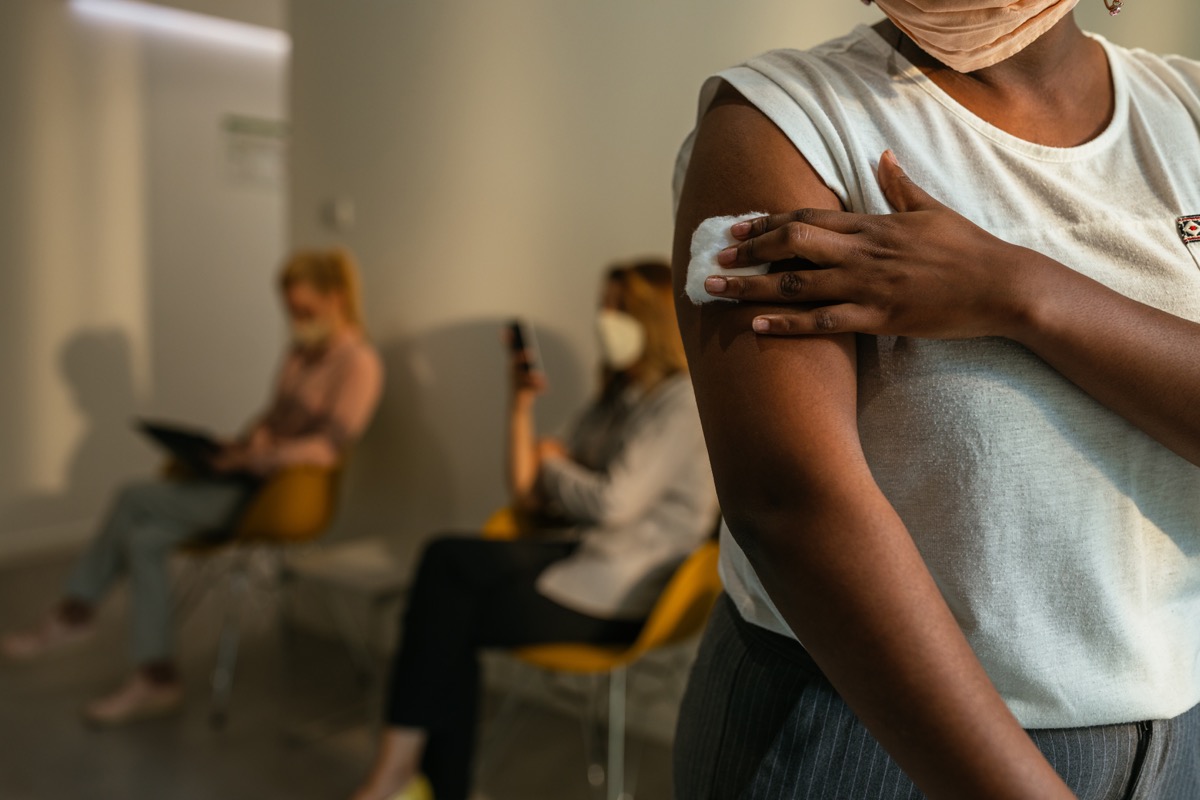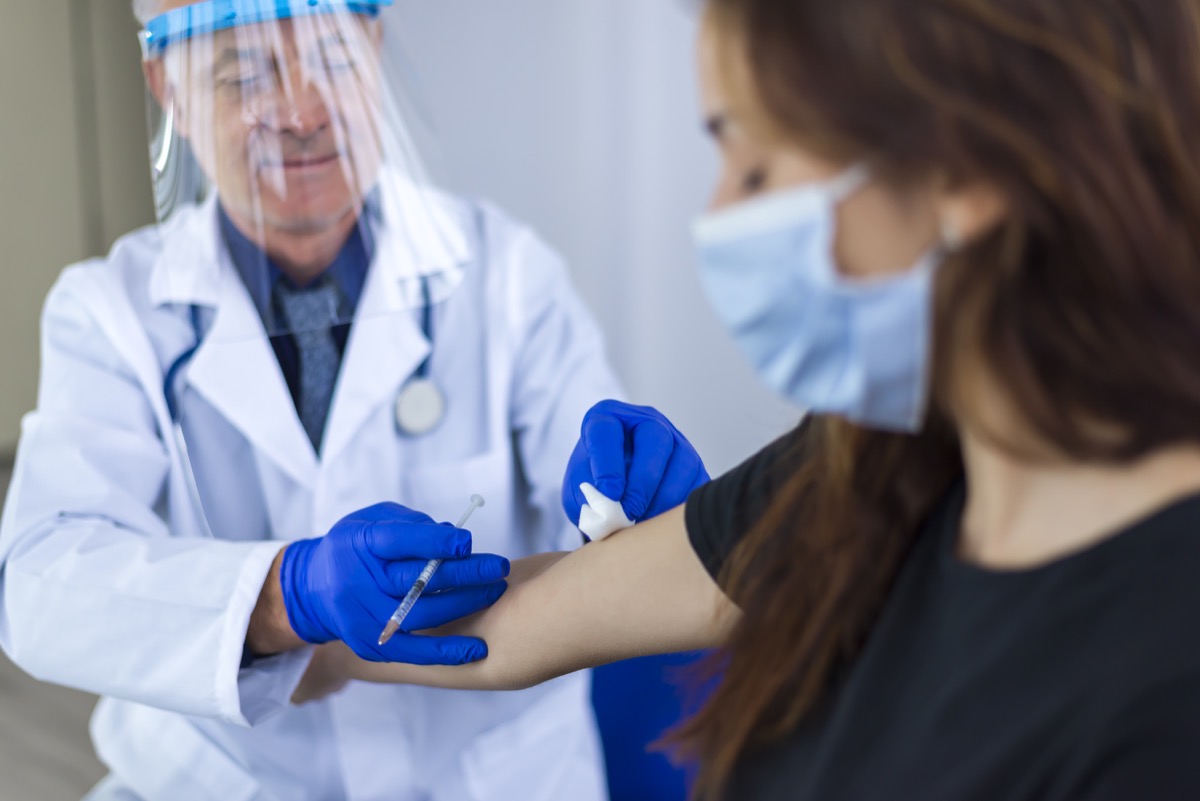The initial hope held by health experts of vaccinating enough of the population to put COVID behind us once and for all is beginning to shift slightly. During an interview with The New York Times, Fauci explained that while reaching herd immunity made sense as a long-term goal, getting enough of the population immunized should help curb outbreaks in the short term. “People were getting confused and thinking you’re never going to get the infections down until you reach this mystical level of herd immunity, whatever that number is,” Fauci told The New York Times. “That’s why we stopped using herd immunity in the classic sense. I’m saying: Forget that for a second. You vaccinate enough people, the infections are going to go down.” According to data from the U.S. Centers for Disease Control and Prevention (CDC), more than half of all Americans have received at least one dose of vaccine, with 100 million people—or almost a third of the population—having been fully vaccinated. But a recent drop off in vaccination rates has experts concerned doses are now being administered too slowly ever to achieve the 80 percent needed to achieve true herd immunity.ae0fcc31ae342fd3a1346ebb1f342fcb Now, flagging public interest and vaccine inequity could mean that COVID will still be present once cases come down. “The virus is unlikely to go away,” Rustom Antia, an evolutionary biologist at Emory University in Atlanta, told The Times. “But we want to do all we can to check that it’s likely to become a mild infection.” And for more on the effectiveness of your shots, This One Vaccine May Protect You Against All Variants, New Study Says. While eradication of the virus may be too difficult to achieve in the coming months, experts have pointed out that focusing vaccines on the vulnerable portions of the population that is more often hospitalized or have fatal outcomes with COVID-19 have already had an immediate effect. Eventually, some expect it to become a seasonal issue similar to the flu or the common cold that will only affect the young and healthy and won’t overwhelm the hospital system as it did during its first appearance. “What we want to do at the very least is get to a point where we have just really sporadic little flare-ups,” Carl Bergstrom, an evolutionary biologist at the University of Washington in Seattle, told The Times. “That would be a very sensible target in this country where we have an excellent vaccine and the ability to deliver it.” Fortunately, Fauci has also previously hinted that vaccinations could help temper some of the worst effects of the virus. During a virtual event hosted by the Harvard T.H. Chan School of Public Health on Apr. 26, he remained optimistic about the current trajectory of the pandemic, saying, “literally within a few weeks, we’re going to start to see a turning around of the dynamics.” “If you’re waiting for classic measles-like herd immunity, that’s going to be a while before we get there,” he explained, according to CNBC. “But that doesn’t mean we’re not going to have a significant diminution in the number of infections per day and a significant diminution in all of the parameters, namely hospitalizations and deaths.” And for more on what the next phase of the pandemic might look like, America Will “Feel Close to Normal” by This Exact Date, COVID Expert Says.



